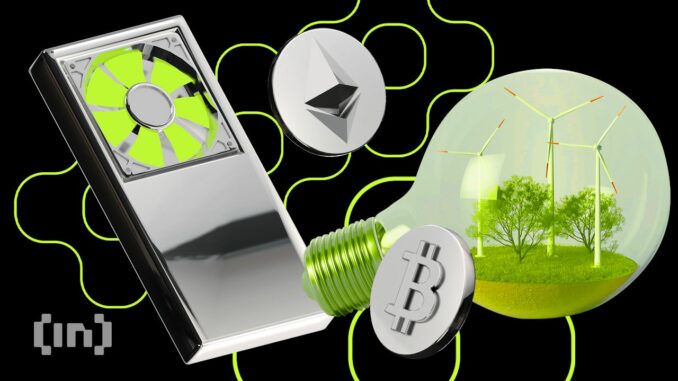
Stronghold Digital Mining disclosed its intent to extinguish $17.9 million of principal debt by converting Notes to equity.
According to an SEC filing, Stronghold will extinguish amended notes worth $17.9 million in exchange for Class C preferred shares with a combined face value of $23.1 million. A stock’s face value is the minimum amount a shareholder must pay, as outlined in a company’s charter. New holders of class C shares will have the option of converting them to Class A common stock. The company expects to issue a maximum of 57.8 million Class A shares.
Stronghold Strengthens Position Through Debt Reduction and Power Sales
According to its filing, the debt-to-equity conversion will reduce Stronghold’s principal debt from $82 million to roughly $55 million. The mining firm has set a deadline of Feb. 20, 2023, to complete the transaction, pending shareholder and Nasdaq approval.
“Following the Closing of the Exchange Agreement, which is currently expected to occur in February 2023, the Company expects to have less than $55 million in total principal amount of debt outstanding,” said Stronghold’s CEO Greg Beard.
Per its Q3 2022 earnings call, the miner returned 26,000 Bitcoin mining computers to the New York Digital Currency Group (NYDIG) and BankProv. This move extinguished $68 million in principal debt. In Oct. 2022, it boosted its balance sheet by securing equipment financing with lower monthly repayments.
Stronghold shares 50% of the Bitcoin it mines, less energy costs, as part of a hosting agreement with Foundry, the world’s largest Bitcoin mining pool. Stronghold also sells power to the grid when doing so makes more economic sense than mining Bitcoin.
Mining Difficulty Adjusted Down as More Machines Halted
Stronghold’s debt curtailments strengthen its balance sheet as other debt-laden miners struggle to keep the lights on.
Mining difficulty fell 3.6% in the last two weeks as some miners took their equipment offline.
The Bitcoin algorithm adjusts difficulty based on the average time taken to guess the correct hashes of the previous 2016 transaction block headers. It lowers the difficulty when fewer machines compete to guess the right hash. Conversely, it increases the difficulty when more machines jockey for the correct answer.
A miner feeds a nonce variable into a hashing function to create an output that is less than a specific target value. When fewer miners are online, the algorithm increases the target value, making it easier to generate a lower output.
A Bitcoin miner proves he has done a certain amount of work to guess the correct nonce and is then rewarded with Bitcoin. The number of guesses he makes per second is measured by a metric called the hashrate.
Some Bitcoin mining companies have offloaded hashrate to cut debt repayments.
New York-based hosting company Greenidge recently offloaded 2.8 Exahashes per second (EH/s) of hashrate to NYDIG, while Stronghold consensually returned 2.5 EH/s of capacity to NYDIG in Q2 2022. Sydney-based Iris Energy said it would shut down 3.6 EH/s from two business operations after they failed to generate sufficient cash flow.
Additionally, other notable companies have had to sell mined Bitcoin to help their monthly cash flows.
Bitfarms sold 3,000 BTC in June 2022 to repay a $100 million loan from Galaxy Digital. Its CEO Emiliano Grodzki resigned from his post in Dec. 2022. Core Scientific, the public mining company with the highest debt burden, sold over 7,000 BTC in Q2 2022. The Austin, Texas, firm recently filed for Chapter 11 bankruptcy.
For Be[In]Crypto’s latest Bitcoin (BTC) analysis, click here.
Disclaimer
BeInCrypto has reached out to company or individual involved in the story to get an official statement about the recent developments, but it has yet to hear back.








Kommentar hinterlassen